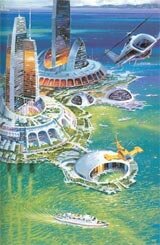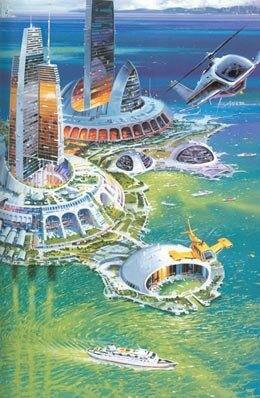
The notion of cities condensed into a singular structure or hyperstructure, has frequented works of fiction as far back as 1899 with H.G. Wells, When the Sleeper Wakes. The concept garnered wider attention seventy years later when Architect Paolo Soleri published, Arcology: The City in the Image of Man. Massive self sustaining habitats, the pliable infrastructure and small ecological footprint of arcologies avoid the damaging, inefficient urban sprawl of today’s cities and suburbia.
Despite increasing stresses on our existing societal structure and a world population rapidly growing to unsustainable levels, land based arcologies appear unlikely in the foreseeable future. The answer may reside with the remaining seventy percent of the Earth’s surface, our oceans. Ocean arcologies could utilize ocean thermal energy conversion (OTEC) or derive energy from the ocean’s perpetual motion to provide abundant pollution-free energy. Fresh water would be available via desalination. Despite the inherent dangers and high expense, the surface of Earth’s oceans are already littered with surprising structures from Sea Forts in the Thames Estuary to the famed remnants of Florida’s Stiltsville and of course the ubiquitous oil rig. Following, a compilation of ambitious ocean arcology concepts.

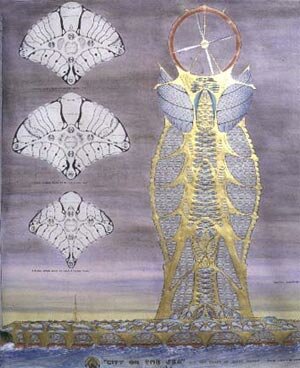

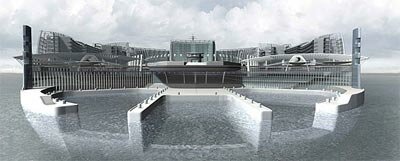
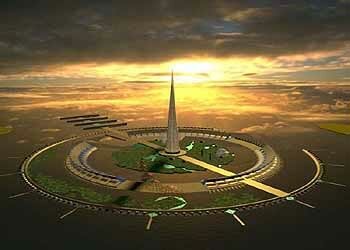
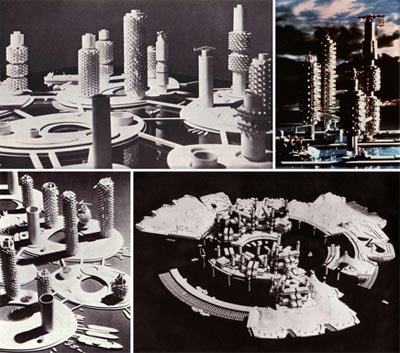
Image from Archinect feature Atelier Bow-Wow: Tokyo Anatomy. Lower right image depicts Hawaii Floating City.

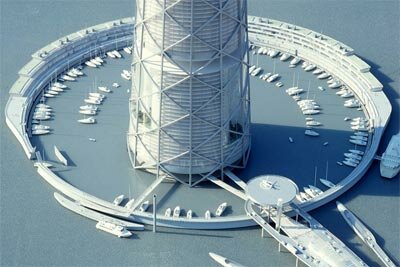
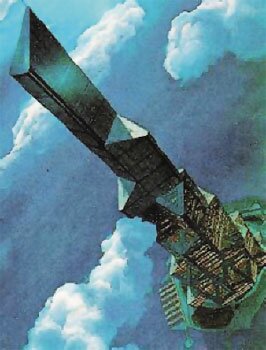
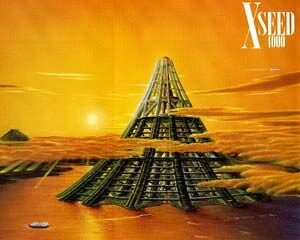
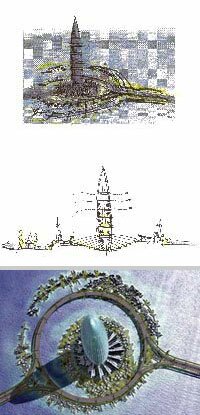
Top most illustration by Paul R. Alexander from the article Energy from the Ocean: A Resource for the Future by Terry R. Penney and Thomas H. Daniel. Published in the 1989 Encyclopædia Britannica volume, Science and the Future.
Ed. Note: XSeed 4000, Millennium Tower, Shimizu Mega Pyramid and Aeropolis 2001 were all proposed for Tokyo Bay. While some were designated up to 2km off-shore, they are not in open ocean waters. Bionic Tower features a bridge connecting to the mainland, reminiscent of the Burj Al Arab in Dubai.









